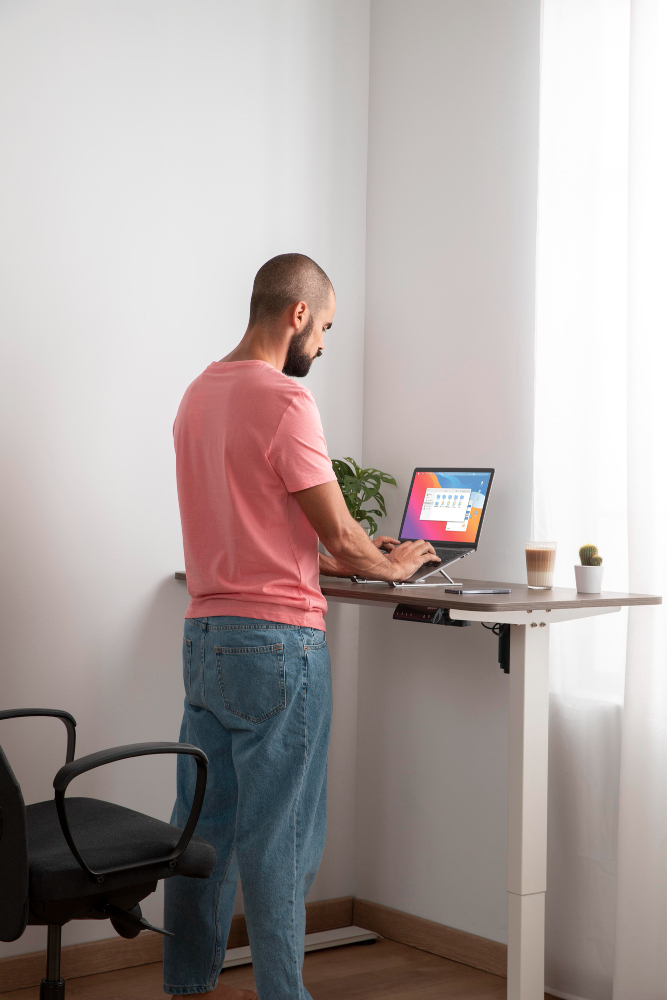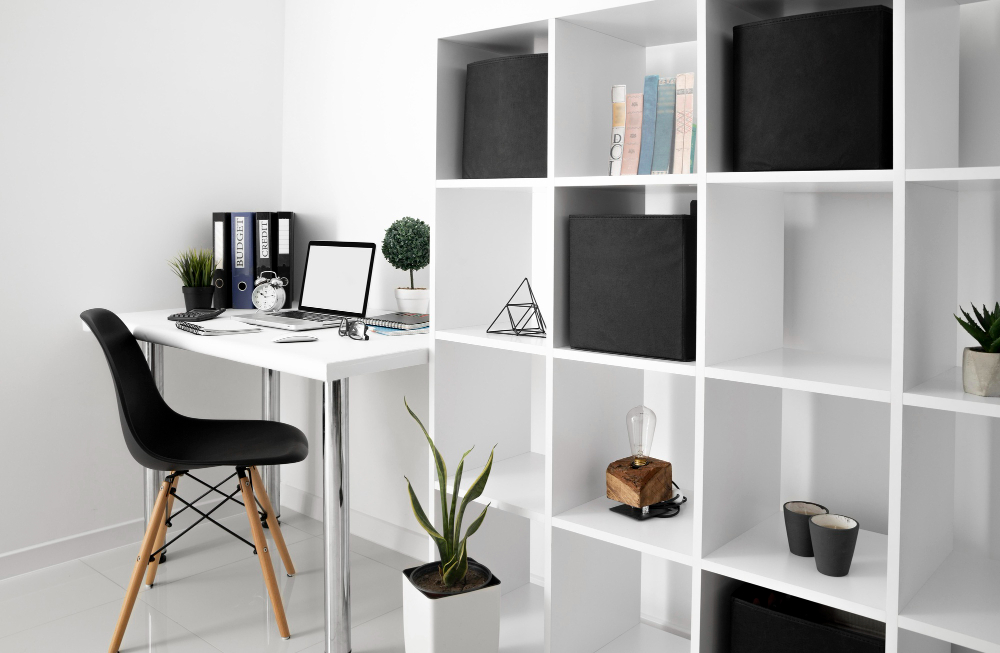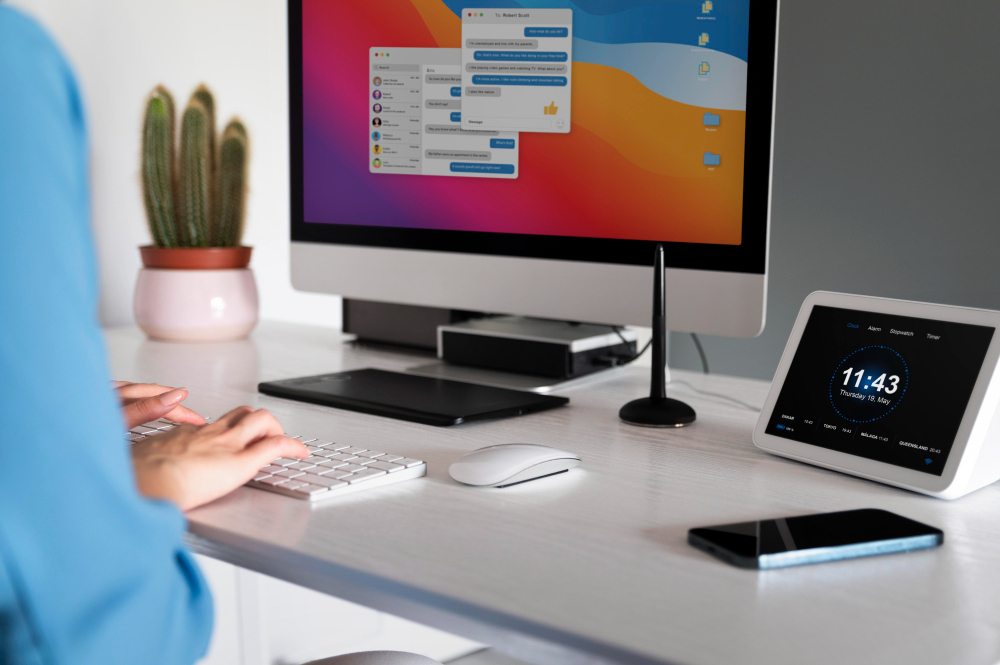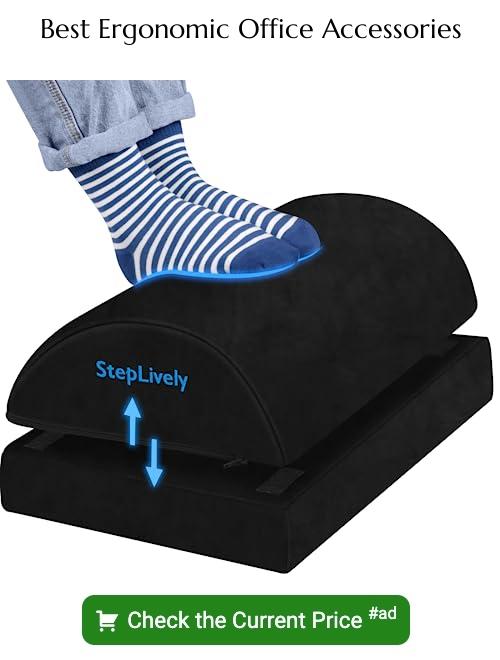Last updated on
In today’s dynamic work environment, it’s crucial to have a space that not only caters to the physical needs of its users but also promotes creativity and collaboration.
Whether you are a remote worker seeking to optimize your home office, or a business owner looking to improve your team’s work environment, this guide will provide valuable strategies for how to design and organize your space for maximum functionality.
Stay tuned as we delve into the intricacies of ergonomic design, efficient space utilization, and the importance of incorporating elements of nature into your workspace.
What's Inside
Ergonomic Design

Not only does ergonomic furniture prevent strain and injuries, but it also enhances productivity. Consider investing in height-adjustable desks, ergonomic chairs, and keyboard trays to maintain proper posture and minimize discomfort.
For example, stand desks allow individuals to alternate between sitting and standing throughout the day, reducing the negative effects of prolonged sitting. Additionally, ergonomic chairs with lumbar support and adjustable armrests promote proper spinal alignment and reduce strain on the neck and shoulders.
Ergonomic furniture may seem like a costly investment, but in the long run, it pays off through increased productivity and reduced healthcare expenses.
Efficient Space Utilization

Efficient use of space can significantly impact your workflow. Think about how you use your workspace and organize accordingly. Consider using vertical spaces for storage to free up desk space for essential items. Utilize shelves, file cabinets, and wall-mounted organizers to keep items within reach.
Additionally, consider investing in multi-functional furniture such as desks with built-in storage or dual-purpose chairs that can also serve as storage units. Keeping the space clutter-free and well-organized can save time and energy by avoiding unnecessary distractions
From color-coding files to using labeled storage bins, there are various ways to optimize your space for efficient use.
Incorporating Nature

Studies show that incorporating natural elements in your workspace can reduce stress and enhance creativity. Try adding indoor plants or using natural light to create a calming and inspiring environment. If possible, position your desk near a window to allow for natural light and views of nature.
You can also add elements such as water features or natural scents like essential oils to promote relaxation and boost productivity. Additionally, consider using materials such as wood or stone in the design of your workspace to bring a touch of nature indoors. In doing so, you can create a more tranquil and energizing space for yourself and your team.
Technology Integration

In the digital age, integrating technology seamlessly into your workspace is essential. Ensure that your workspace is equipped with adequate power outlets and consider using wireless technology to reduce clutter. Invest in a high-quality internet connection and optimize your computer setup to meet your needs.
Additionally, consider using productivity apps or tools that can help you stay organized and on track with your tasks. However, it’s essential to strike a balance and avoid being overly reliant on technology as it can also be a source of distraction.
Furthermore, regularly declutter and organize your computer files to maintain a streamlined and efficient digital workspace.
Noise Management
Managing noise levels is key to maintaining a productive environment. Consider using noise-cancelling headphones or installing sound-absorbing materials in your workspace. If working in a shared space, establish ground rules for noise levels and consider creating designated quiet areas.
Additionally, you can use white noise machines or calming music to drown out distracting noises and create a peaceful ambiance. For remote workers, it may be helpful to communicate your work schedule to family members or roommates to minimize disruptions.
More importantly, it’s crucial to find a noise level that works best for you and adjust accordingly. On average, low to moderate background noise has been found to enhance creativity and productivity.
Personalization
Personalizing your workspace can make it more comfortable and inviting. Add personal touches like family photos, artwork, or favorite books to make your workspace truly your own.
This can help you feel more connected to your space and increase motivation. However, be mindful not to clutter the space with too many personal items, as it can be counterproductive.
Keep a balance between functionality and personalization. Many personal items can be counterproductive, so it’s essential to strike a balance between functionality and personalization. For insta,ce, you can use a designated wall or bulletin board to display personal items and keep the rest of the space clutter-free.
The Takeaway
Creating a functional workspace involves careful consideration of ergonomic design, efficient space utilization, incorporation of natural elements, technology integration, noise management, and personalization.
By implementing these strategies, you can optimize your workspace for maximum productivity and creativity. Remember to regularly assess and make necessary adjustments to ensure that your space continues to meet your needs as they evolve over time.
With a well-designed and organized workspace, you can reach your full potential and achieve success in your work.





